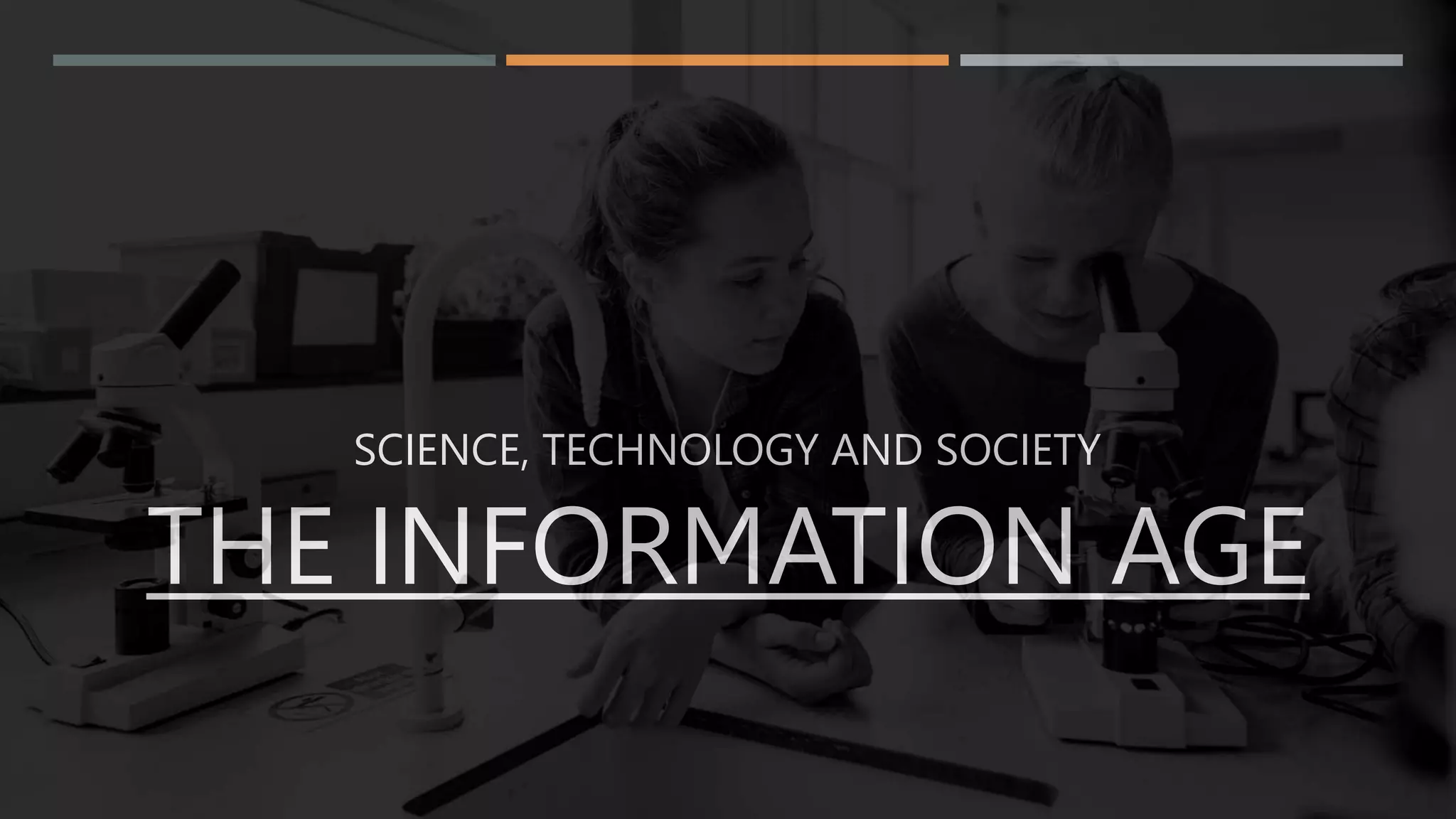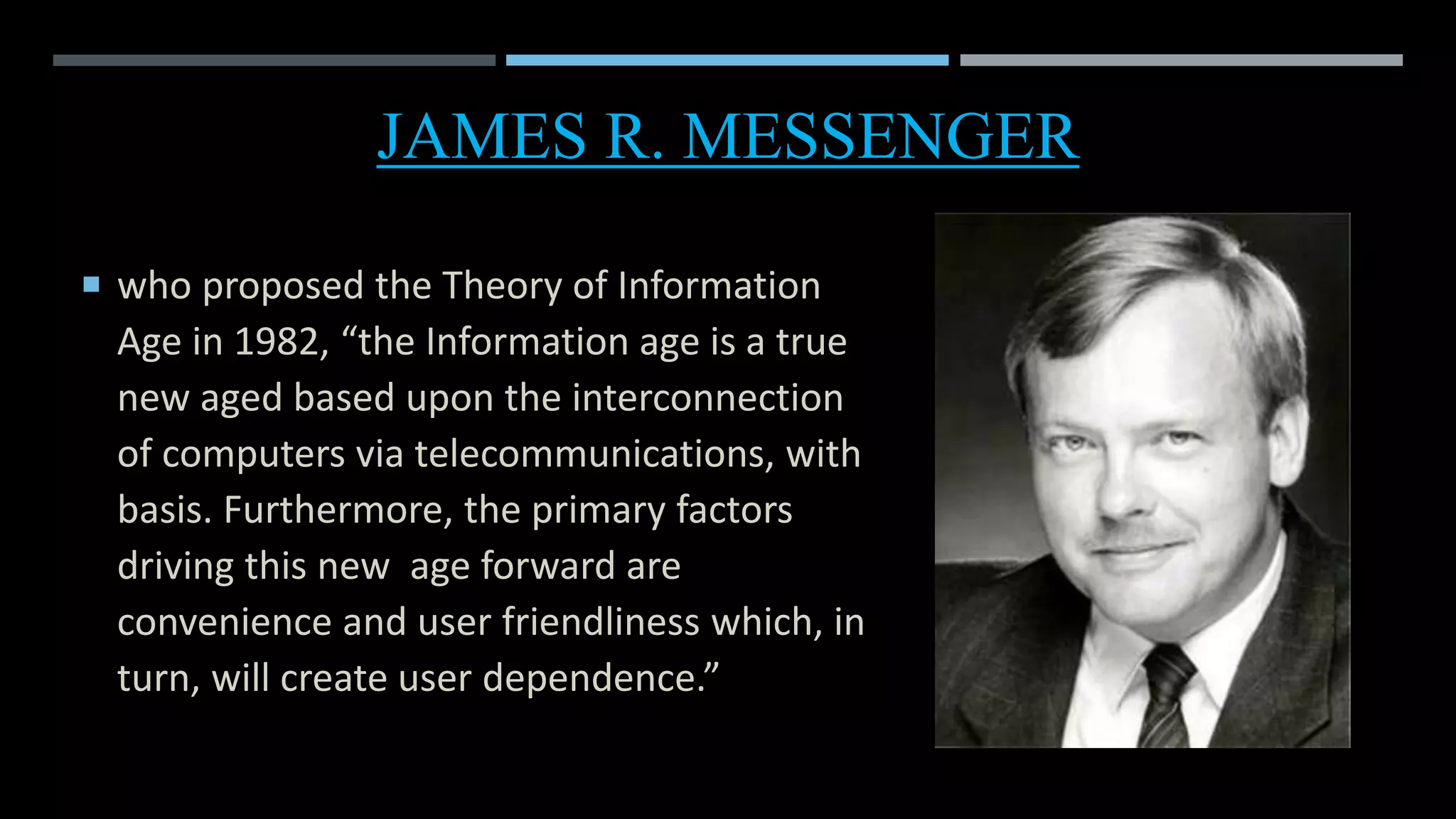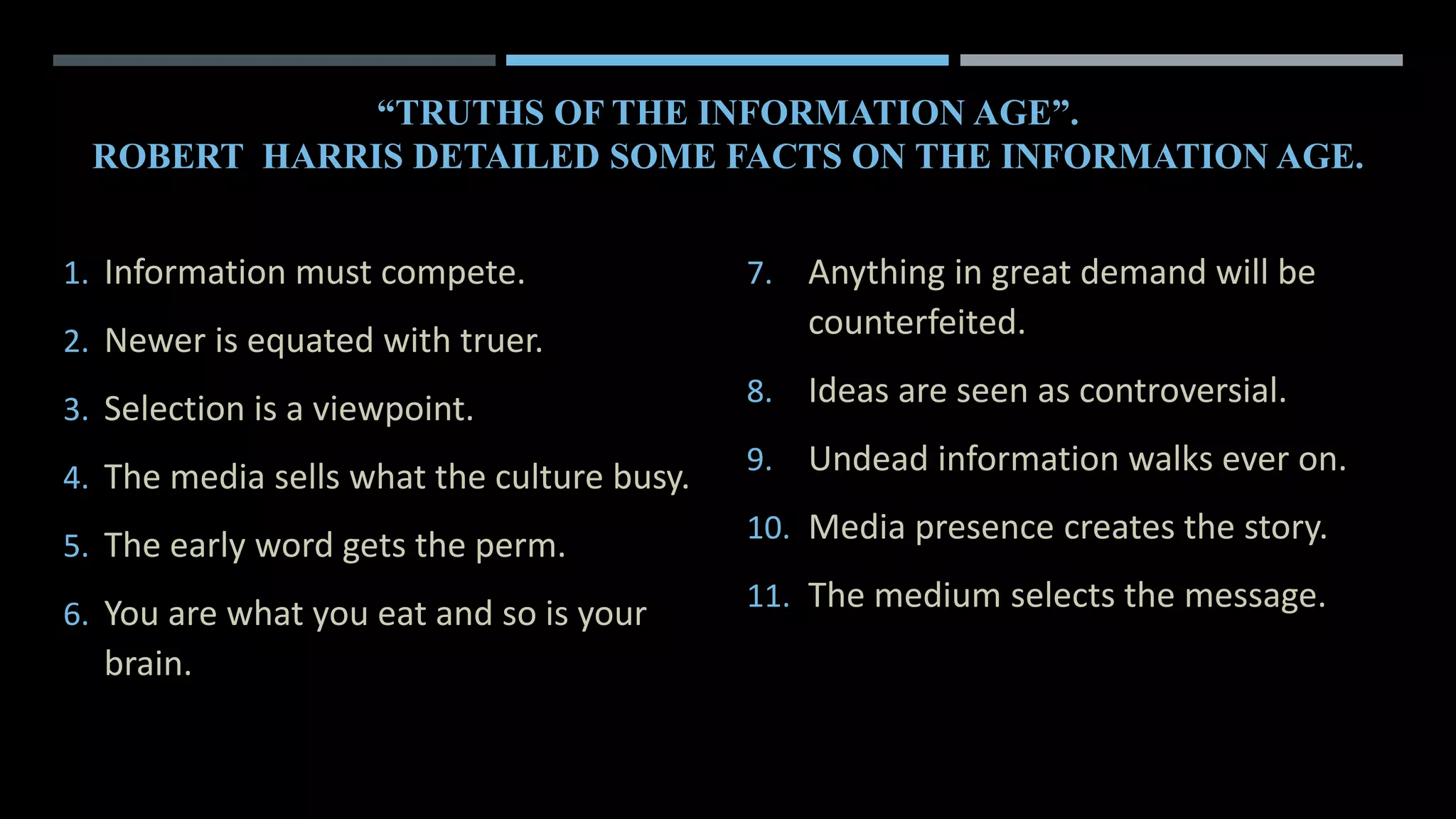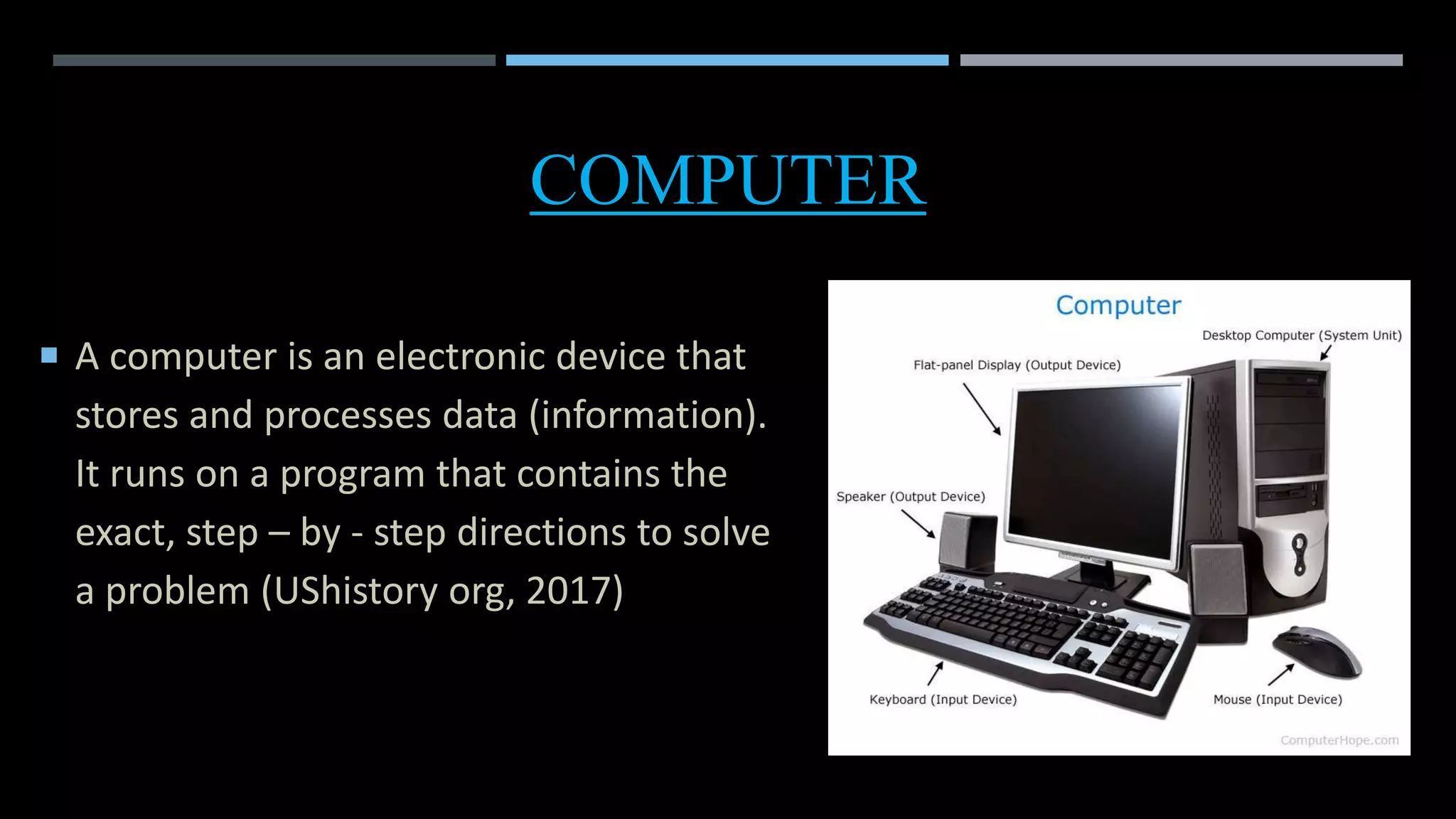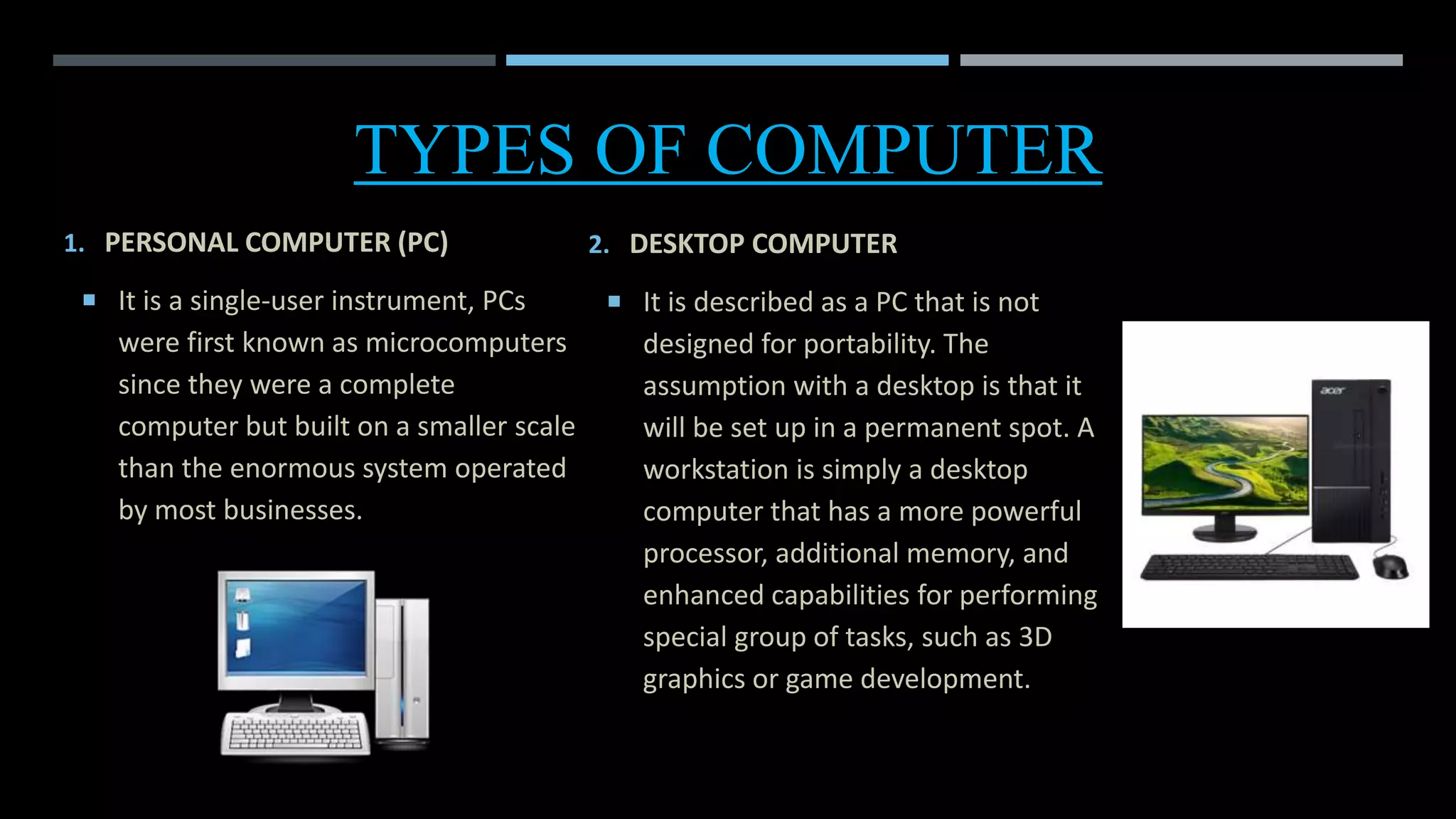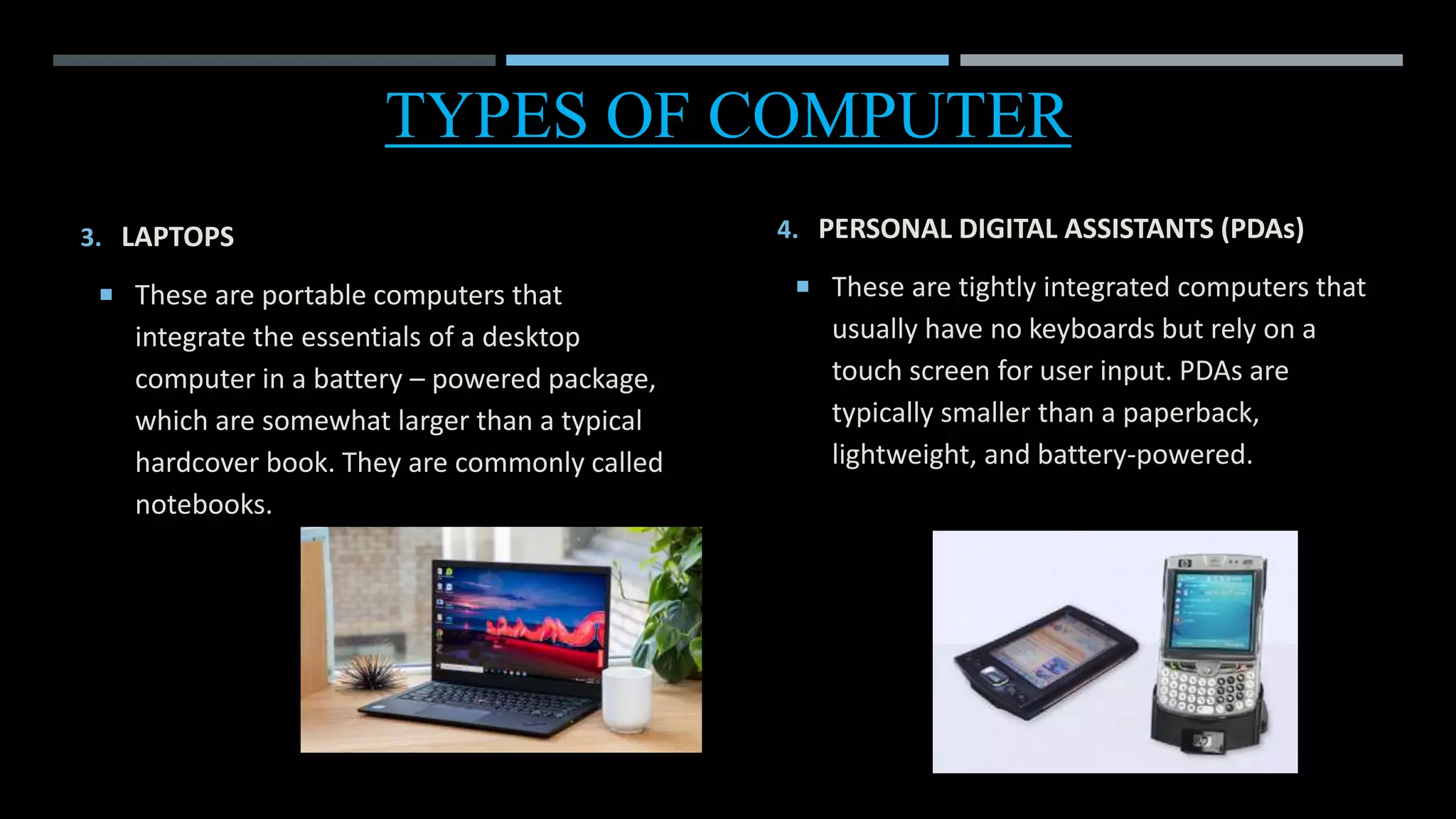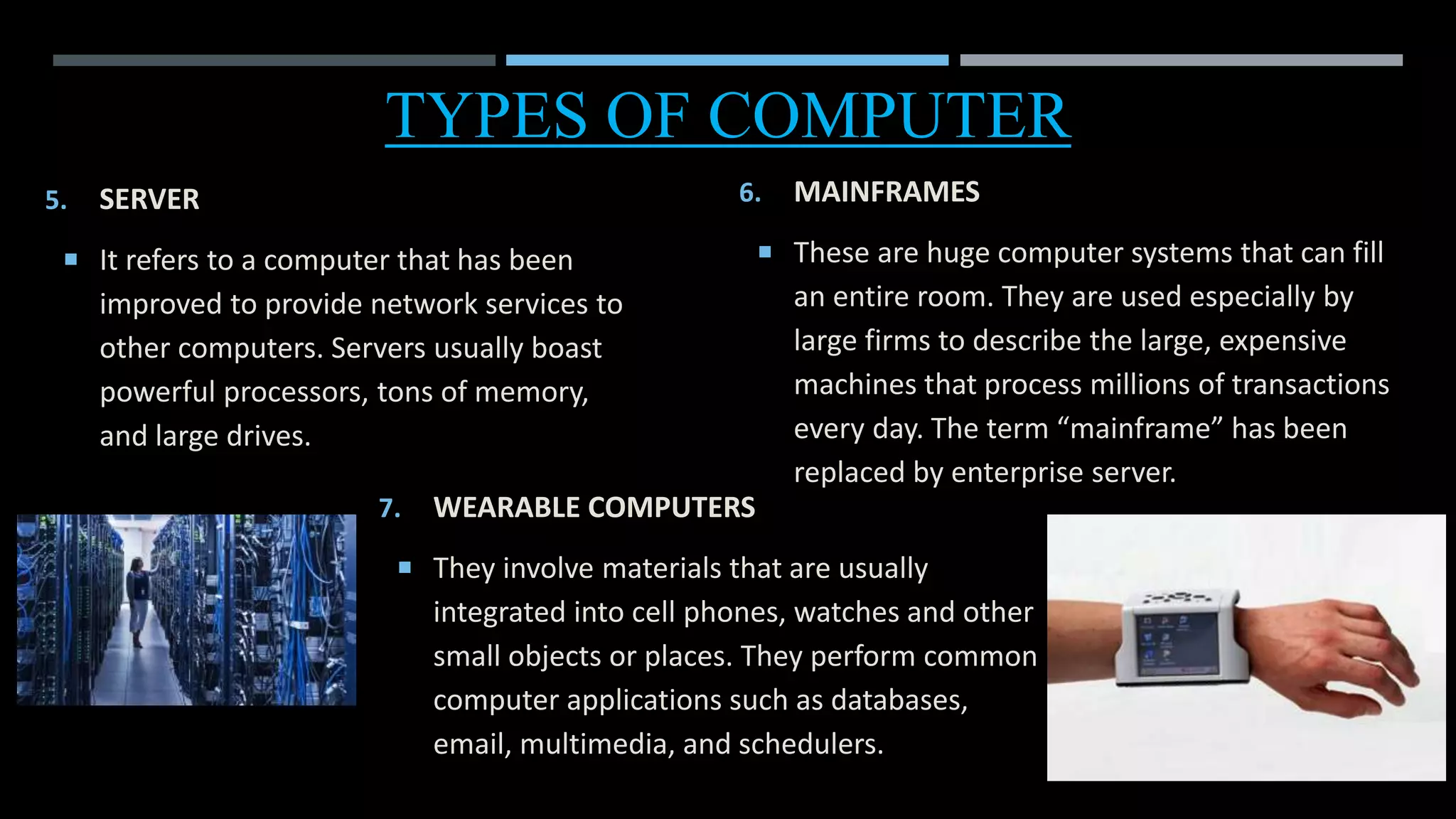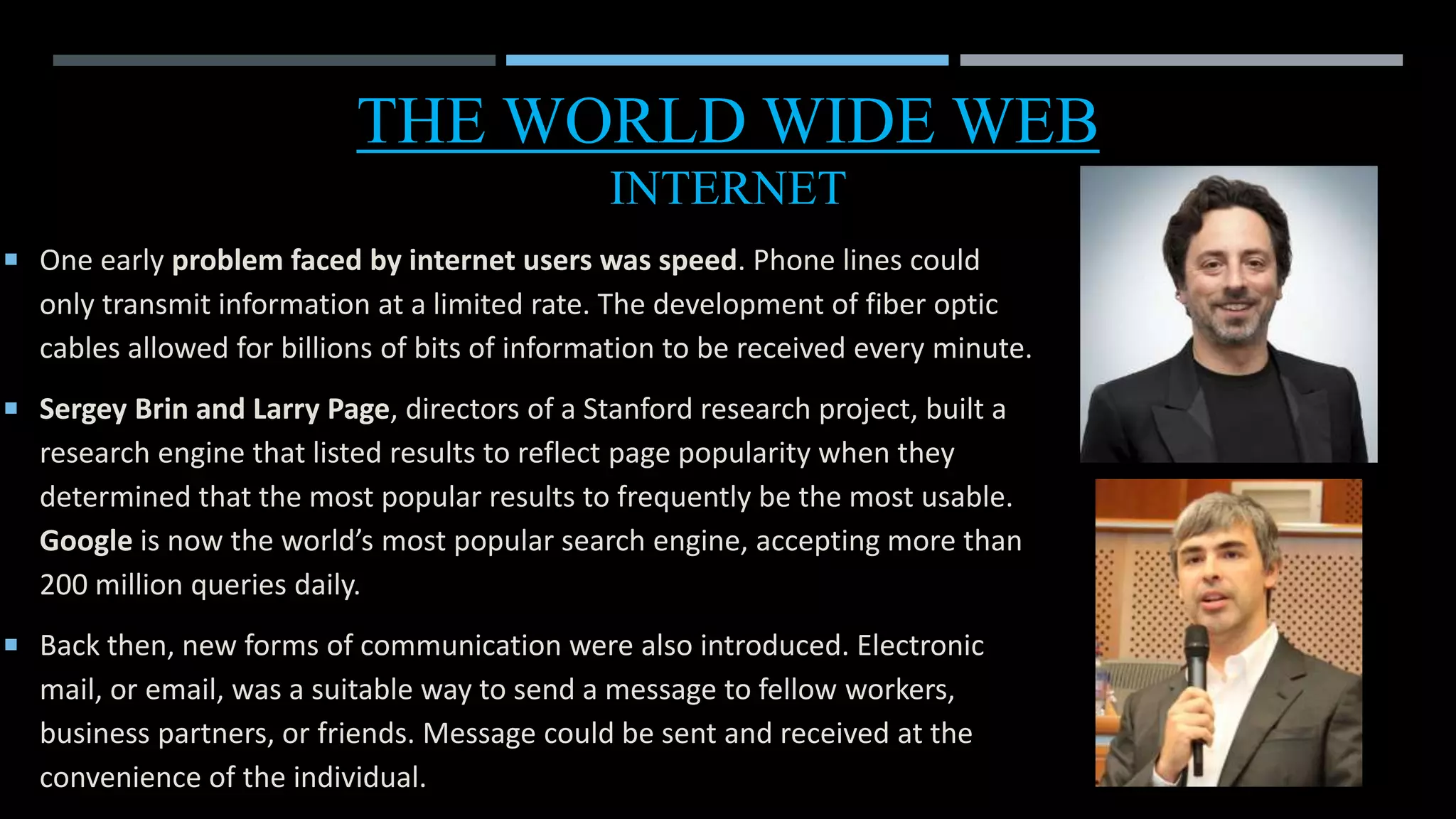The document provides an overview of the information age, including its history and key factors. It discusses how information has evolved from being difficult to manage and share to being effortlessly accessible through computers and networks. The information age is defined as starting in the late 20th century. Key aspects covered include the development of the internet, emergence of search engines like Google, rise of email and social media, and applications of computers in science and research like bioinformatics. It emphasizes the need to carefully evaluate the reliability of sources online.
